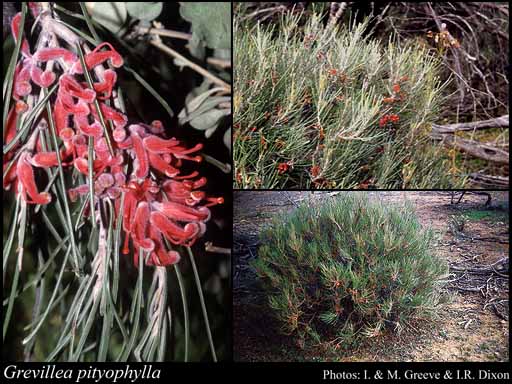- Reference
- Fragm. (Mueller) 6:208 (1868)
- Conservation Code
- Not threatened
- Naturalised Status
- Native to Western Australia
- Name Status
- Current
Dense, much-branched shrub, (0.3-)0.5-1.5 m high. Fl. red, Jun to Oct. Red loam, red sand, often with gravel. Granite outcrops & breakaways, sandplains.

Scientific Description
Shrubs, 0.5-1 m high; branchlets hairy, not glaucous. Leaves alternate, 60-100 mm long, 1-1.5 mm wide, glabrous; lamina flat, more or less the same width throughout, entire, the margins revolute. Inflorescences axillary or cauline, red or pink; pedicels 5-8 mm long. Perianth 10-15 mm long; tepals some joined and some free after flower opens, hairy, simple-hairy; ovary hairy, stipitate, the stipe 1-2 mm long; pistil 18-22 mm long, red, pollen presenter lateral, style hairy. Follicles hairy, not viscid, dehiscent, 11-13.5 mm long. Flowers in July, August, September or October. Occurs in the Eremaean (ER) or South-west (SW) Botanical Province(s), in the Yalgoo (YAL), Murchison (MUR) or Avon Wheatbelt (AW) IBRA subregion(s).
Distribution
- IBRA Regions
- Avon Wheatbelt, Gascoyne, Murchison, Yalgoo.
- IBRA Subregions
- Carnegie, Eastern Murchison, Merredin, Tallering, Western Murchison.
- Local Government Areas (LGAs)
- Greater Geraldton, Morawa, Mount Magnet, Mount Marshall, Murchison, Perenjori, Sandstone, Wiluna, Yalgoo.